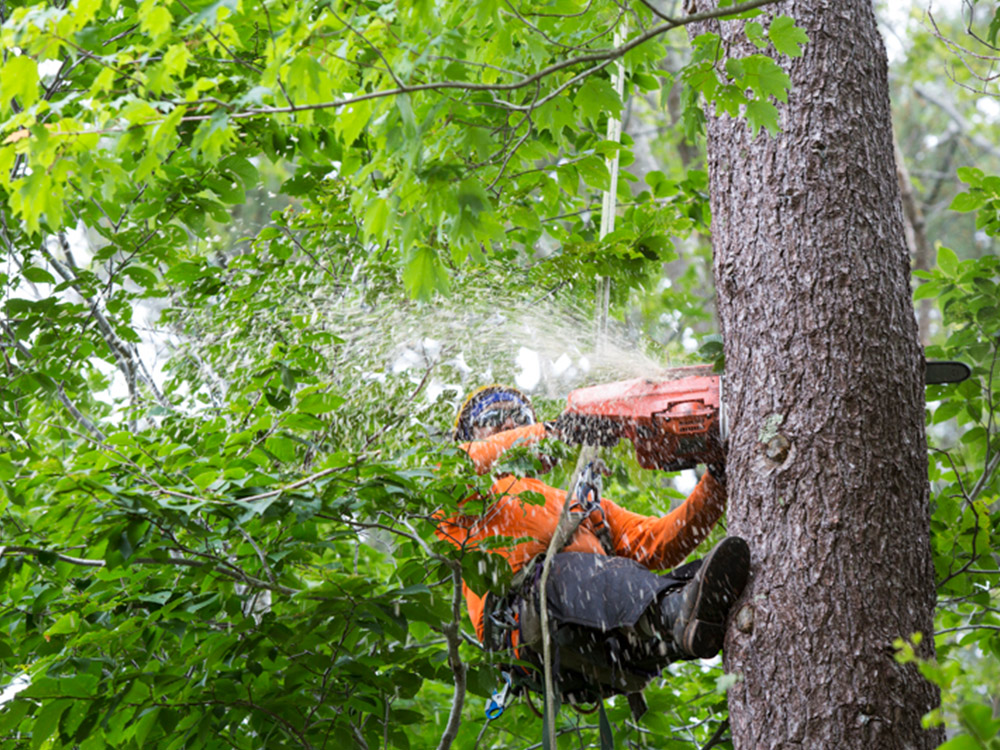[ad_1]
If you are planning to remove a tree in your yard, stump grinding is an option that you might want to consider. It is an effective way to get rid of a tree stump without removing the root. Moreover, it is a safer and cheaper option compared to tree stump removal. Here are some reasons you might want to consider stump grinding:
Stump grinding is a process that excavates the stump of a tree without removing the root
Stump grinding is a process that allows you to eliminate a tree’s stump without having to cut down the tree or remove the root. A machine grinds away the stump and leaves a fine sawdust residue behind. This material can be ground down to several inches below ground level, depending on your needs. The ground up material is then used as filler around the tree’s stump. Unlike traditional stump removal, this method will not create unsightly holes or damage the surrounding plants.
While stump removal is the preferred method of tree removal, it is sometimes impossible to do so due to nearby structures, utilities, or other obstacles. In such cases, Stump Grinding may be the only option available. Stump grinding is also a safer alternative than stump removal, especially for stumps that are near septic drain fields and utilities.
It is cheaper than tree stump removal
While tree stump removal is generally invasive and requires heavy equipment, stump grinding is much safer and less invasive. This type of service will leave behind a shallow hole, which will be easy to fill in with soil. In addition, stump grinding will preserve the roots of the tree. While the roots will eventually break down and disappear into the ground, they cannot be planted in the area where the stump is located.
While tree stump removal requires heavy equipment and expensive tools, stump grinding is more affordable. Unlike tree stump removal, stump grinding is environmentally friendly, as no chemicals are used. Using chemicals can contaminate the soil and pollute the environment. Some chemicals can also cause a health hazard for people. Moreover, chemical stump removal methods may not be effective for large trees. Stump grinding, though, can save you a lot of time. However, it may take up to 10 years or more for the stump to completely decay and look like a bare stump.
It is faster
Compared to stump removal, stump grinding is much faster. Unlike the former, this procedure doesn’t require digging up the entire stump, which takes more time and manpower. Stump removal also requires digging around the stump to expose the tree roots. However, it is less expensive than stump grinding.
Stump grinding also leaves a much smaller mess than stump removal. Manual stump removal can take hours, depending on its size. Furthermore, stump grinding leaves a small pile of wood chips. This makes clean-up easier. As a result, stump grinding is faster and more convenient than stump removal.
When using stump grinding, you must keep in mind that the depth of grinding is limited. Most tree stumps only extend to about six inches beneath the surface. In addition, if the stump is close to a structure or utility lines, it might be too dangerous to remove it. Grinding too deep can damage a building’s foundation, or damage underground utilities. Whether you use a grinder or a contractor, be sure to check for hidden liability before you start your project.
It is safer
Unlike full-scale tree removal, stump grinding is much safer and more durable. The process of grinding a stump removes it from the tree while cutting off its roots, which die without damaging surrounding plants. It is also more environmentally friendly, leaving no visible hole in the ground. If you’re unsure if stump grinding is right for your home, consult an expert.
First, inspect the work area. Make sure there are no hazards like buried objects or utility lines. You should also wear safety glasses with ANSI certification.
It is more efficient
Unlike stump removal, which involves digging a giant hole and removing the tree’s roots, stump grinding is much easier and quicker. The process also leaves behind very little cleanup. The stump grinding chips are often able to be used for other purposes. This means that you’ll be able to enjoy the same yard without worrying about a giant hole.
Stumps are not only unsightly, but also pose a safety risk. They can also reduce the value of your property. They can also be difficult to remove. And, if they’re close to structures, they may damage underground utilities and foundations. Whether you choose to do it yourself or hire a professional, you should carefully check for any hidden liabilities.
[ad_2]










